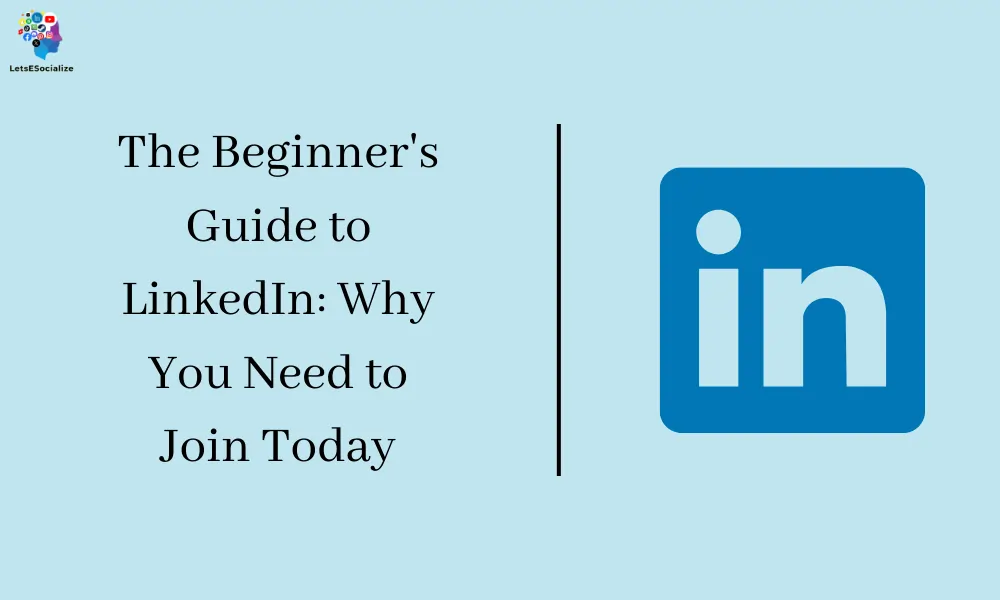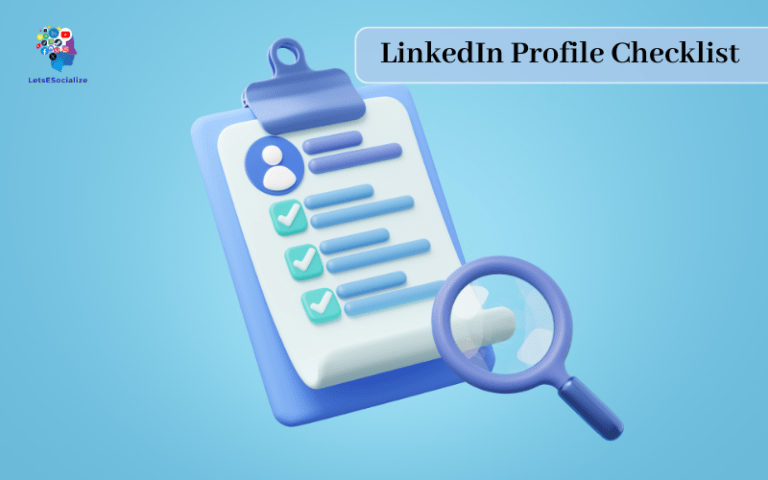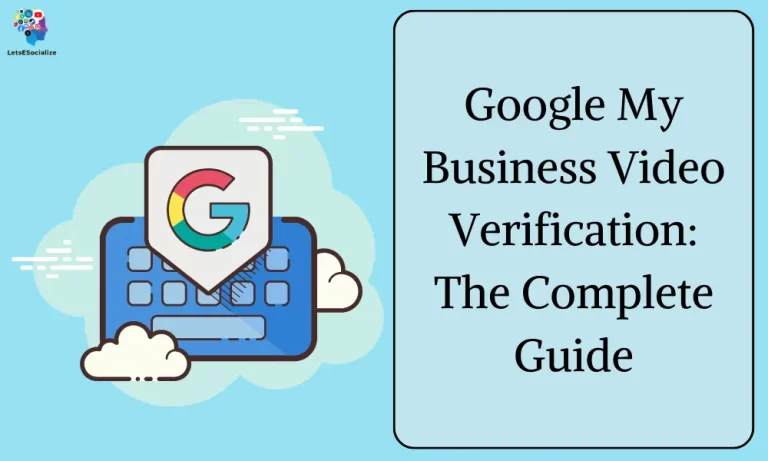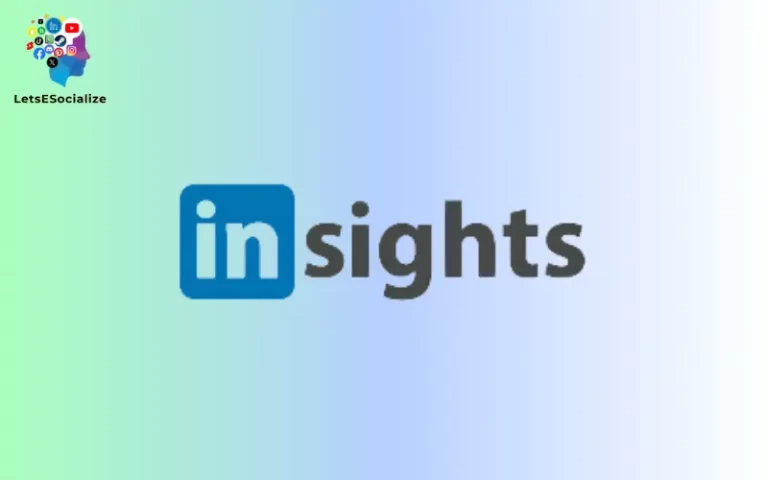LinkedIn has become a vital tool for professionals in today’s digital age. Whether you’re looking for a job, building your brand, or networking with industry leaders, LinkedIn offers a wealth of opportunities. In this guide, we’ll explore what LinkedIn is, Why You Need to Join Today, and how to make the most of this powerful platform.
Table of Contents
Chapter 1: What is LinkedIn?

LinkedIn is a business and employment-oriented social media platform primarily used for professional networking and career development. It’s essentially a digital platform where professionals can:
- Connect: Build a network of colleagues, potential employers, and industry experts.
- Showcase their professional experience: Create a profile highlighting their skills, education, and work history.
- Search for jobs: Find and apply for open positions across various industries and locations.
- Share and learn: Post and share industry news, insights, and articles, fostering knowledge sharing and industry engagement.
- Build their brand: Cultivate a strong online presence showcasing their expertise and career aspirations.
Here’s a breakdown of some key features of LinkedIn:
- Profiles: Users create profiles outlining their professional background, skills, and experience.
- Connections: Users build a network by connecting with other professionals and businesses.
- Jobs: Employers post job openings, and users can search and apply for positions on the platform.
- Groups: Users can join industry-specific or interest-based groups to connect with like-minded professionals, participate in discussions, and stay up-to-date on industry trends.
- Content: Users can share and engage with articles, posts, and other content related to their professions and interests.
Unlike other social media platforms like Facebook or Instagram, which are more personal and social, LinkedIn is focused on professional communication and career development. It provides a platform for professionals to build meaningful connections, showcase their expertise, and advance their careers.
Who should use LinkedIn?
LinkedIn is beneficial for a wide range of individuals, including:
- Job seekers: Looking for new employment opportunities.
- Employees: Wanting to network, build their brand, and stay informed about their industry.
- Employers: Seeking qualified candidates for open positions and promoting their company culture.
- Freelancers and independent contractors: Marketing their services and connecting with potential clients.
- Students and recent graduates: Building connections and exploring career paths.
Overall, LinkedIn plays a crucial role in today’s professional world, offering networking, learning, and career-building opportunities for individuals and businesses alike.
Also Read – Tips for managing Google My Business
Also Read – Why is X still called Twitter?
Chapter 2: The importance of LinkedIn for professionals
In today’s digital age, LinkedIn has become an essential tool for professionals across various industries and career stages. Here’s why its importance for professionals can’t be overstated:

1. Building a Strong Network:
- Connect with Professionals: LinkedIn allows you to connect with colleagues, industry leaders, potential employers, and even mentors. This network can offer valuable career advice, job referrals, and opportunities for collaboration.
- Expand your reach: Unlike local networking events, LinkedIn connects you with a global network, opening doors to broader professional opportunities.
2. Showcasing Expertise and Achievements:
- Create a Professional Profile: Your profile acts as your online resume, showcasing your skills, experience, education, and accomplishments. This allows potential employers and clients to learn about your expertise and qualifications.
- Demonstrate your value: Go beyond simply listing your work history. Utilize keywords relevant to your field and highlight achievements and quantifiable results to stand out from the crowd.
3. Job Hunting and Career Advancement:
- Job Search Efficiency: Easily search and apply for open positions directly through LinkedIn. You can also set up job alerts to receive notifications when relevant opportunities arise.
- Increase visibility to recruiters: Many recruiters actively use LinkedIn to find qualified candidates. Having a well-maintained profile increases your chances of being discovered and getting contacted for potential job opportunities.
4. Building your Brand:
- Establish Yourself as an Expert: Share relevant articles, insights, and experiences to demonstrate your knowledge and expertise in your field. This helps position you as a thought leader and attract potential clients or employers.
- Manage your online reputation: Actively curate your profile and engage with relevant content to cultivate a positive and professional online presence.
5. Learning and Development:
- Stay informed: Follow companies, industry groups, and influencers to stay updated on the latest trends, news, and developments in your field.
- Access Learning Resources: LinkedIn Learning offers a vast array of online courses and tutorials to help you acquire new skills and enhance your professional development.
6. Connecting with Alumni and Colleagues:
- Reconnecting with classmates or former colleagues: Reconnect with your professional network and potentially find opportunities for collaboration or career advice.
- Staying in touch with current colleagues: Build stronger professional relationships with your co-workers and stay connected even after moving on to different positions.
Overall, LinkedIn offers an invaluable platform for professionals to build meaningful connections, showcase their expertise, and advance their careers. By actively engaging with the platform and utilizing its various features, professionals can unlock its full potential and establish themselves in their chosen fields.
Chapter 3: Creating a LinkedIn profile
Here’s a comprehensive guide to creating a strong and impactful LinkedIn profile that will help you achieve your professional goals:

1. Set Up Your Profile:
- Sign up for a free account: Visit https://www.linkedin.com/ and register using your email address or existing Google account.
- Complete your profile information: Fill out all sections accurately and completely, including your name, headline, location, current position, and previous work experience.
- Upload a professional profile picture: Choose a clear, high-quality headshot that portrays professionalism and friendliness.
2. Craft a Compelling Headline:
- Your headline is the first thing people see: Make it concise, informative, and keyword-rich. Include your current job title and key skills.
- Example: “Marketing Manager | Social Media Expert | Brand Strategy”
3. Write a Detailed Summary:
- Go beyond a basic description: Showcase your strengths, accomplishments, and career goals.
- Use keywords: Include relevant keywords related to your industry and desired career path.
- Quantify your achievements: Use numbers and data to demonstrate the impact of your work.
4. Highlight Your Experience:
- List your work history in chronological order: Include company names, job titles, dates of employment, and a brief description of your responsibilities and achievements.
- Quantify your accomplishments: Use data and metrics to showcase the impact you made in your previous roles.
- Tailor your experience: Customize your experience section for each job application by highlighting relevant skills and achievements.
5. Showcase Your Skills and Endorsements:
- Add relevant skills: Include both hard and soft skills related to your profession.
- Get endorsements: Encourage colleagues and connections to endorse your skills to enhance your profile’s credibility.
6. Add Education and Courses:
- List your educational background: Include the name of the institution, degree earned, and relevant coursework.
- Include relevant courses: If you have completed any online courses or certifications, add them to your profile to showcase your continuous learning and development.
7. Share and Engage:
- Publish relevant content: Share articles, insights, and experiences related to your field.
- Engage with others: Comment on posts, participate in discussions, and interact with your network to demonstrate your knowledge and build connections.
- Join relevant groups: Connect with other professionals in your industry or with similar interests.
8. Maintain Your Profile:
- Keep your profile updated: Regularly update your profile with changes in your career and accomplishments.
- Proofread carefully: Ensure your profile is free of grammatical errors and typos.
By following these steps and actively engaging with the platform, you can create a strong and impactful LinkedIn profile that will position you for success in your chosen career path.
Additionally, here are some resources that you may find helpful:
- LinkedIn Learning: [[invalid URL removed]] (For skill development through online courses)
- LinkedIn Help Center: [[invalid URL removed]]
Remember, building a strong LinkedIn presence takes time and effort. However, the benefits of a well-crafted profile are substantial, providing long-term value for your professional development and career goals.
Chapter 4: Building your network on LinkedIn
Building a robust network on LinkedIn is crucial for maximizing the platform’s benefits. Here’s a comprehensive guide to help you build and strengthen your professional network on LinkedIn:

1. Connect with People You Know:
- Start with your existing network: Connect with colleagues, classmates, friends, and family members who are already on LinkedIn.
- Import contacts: Use the “Import Contacts” feature to connect with people from your email address book or other social media platforms.
2. Explore LinkedIn’s Search Function:
- Search for people by name, company, industry, or skill: Utilize filters to refine your search and find relevant professionals to connect with.
- Join relevant groups and follow company pages: This allows you to connect with individuals within those groups and companies.
3. Engage with Others:
- Like and comment on interesting posts and articles: This demonstrates your thoughtfulness and engages others in conversation.
- Share relevant content: Publish articles, insights, and experiences related to your field to establish yourself as a thought leader and attract connections.
- Congratulate others on career accomplishments: Sending personalized messages of congratulations shows you care about your network and encourages positive relationships.
4. Send Personalized Connection Requests:
- Don’t send generic invitations: Craft personalized messages explaining why you want to connect and highlighting a shared interest or connection.
- Mention mutual connections: If you have a mutual connection, mention them in your message and explain how you know them.
- Highlight a genuine reason for connecting: Show genuine interest in connecting beyond just building your network numbers.
5. Attend Virtual Events and Webinars:
- Many companies and organizations host online events: Participate in relevant webinars and virtual events to meet new people and network with professionals in your field.
6. Leverage “People You May Know” Suggestions:
- Review LinkedIn’s “People You May Know” suggestions: These suggestions are often based on your existing connections and industry, offering potential new network connections.
7. Contribute to Group Discussions:
- Actively participate in discussions within relevant groups: Share your insights, ask questions, and engage with other members. This allows you to showcase your expertise and build connections with like-minded individuals.
8. Be Patient and Consistent:
- Building a strong network takes time and effort: Don’t expect instant results. Be patient, and consistent in your engagement, and focus on building genuine connections.
9. Offer Help and Support:
- Showcase your willingness to help others: Sharing your knowledge and expertise can attract individuals seeking guidance or collaboration opportunities.
10. Utilize Advanced Search Features:
- LinkedIn offers advanced search filters: Use Boolean operators and specific filters to find professionals with niche skills or experiences relevant to your desired connections.
Remember, building a network is not just about adding people; it’s about fostering genuine connections and building relationships. By following these strategies and actively engaging with your network, you can build a valuable network that supports your professional development and career goals.
Chapter 5: Leveraging LinkedIn for career growth
LinkedIn boasts immense potential for individuals seeking career growth. Here’s how you can leverage this platform strategically to achieve your professional aspirations:

1. Build a Strong Profile and Network:
- Create a compelling profile: Craft a professional profile that showcases your skills, experience, and achievements. Use keywords relevant to your industry and desired career path.
- Build a robust network: Connect with colleagues, mentors, industry leaders, and potential employers. Utilize LinkedIn’s search and group features to find relevant connections.
2. Showcase Expertise and Achievements:
- Share high-quality content: Publish articles, insights, and experiences related to your field. This positions you as a thought leader and demonstrates your expertise.
- Engage in industry discussions: Contribute to group discussions and participate in relevant conversations. This showcases your knowledge and allows you to connect with others who share your interests.
3. Job Search Optimization:
- Post your resume: Utilize the “Jobs” section to post your updated resume, making it easily searchable for recruiters.
- Set up job alerts: Receive notifications for openings that match your skills and interests, increasing your chances of finding the right opportunity.
- Apply directly through LinkedIn: Use the “Easy Apply” option to streamline the application process for relevant positions.
4. Connect with Recruiters and Hiring Managers:
- Search for recruiters in your field: Connect with recruiters specializing in your industry to increase your visibility and potential for job opportunities.
- Engage with relevant company pages: Follow companies you’re interested in and participate in discussions on their pages, demonstrating your genuine interest.
5. Personal Branding and Visibility:
- Develop your online reputation: Actively manage your profile and engage with relevant content to cultivate a positive and professional online presence.
- Tailor your profile for specific roles: When applying for positions, adjust your profile to highlight the skills and experience most relevant to the desired job.
6. Utilize LinkedIn Learning:
- Access online courses and tutorials: Invest in your professional development by exploring the vast learning resources offered by LinkedIn Learning, enhancing your skills and qualifications.
7. Highlight Achievements and Quantifiable Results:
- Go beyond simply listing your responsibilities: Quantify your achievements and contributions using data and metrics. This showcases the impact you made in previous roles and your potential value to future employers.
8. Seek Recommendations and Endorsements:
- Request recommendations from colleagues and supervisors: Positive recommendations from reputable individuals can significantly enhance your credibility and attract potential employers.
- Endorse others’ skills: Endorsing others’ skills demonstrates your supportiveness and fosters positive connections within your network.
9. Track Your Progress and Network Activity:
- Utilize LinkedIn’s analytics tools: Track your profile views, engagement metrics, and connections’ activity to understand how your profile performs and identify areas for improvement.
Remember, consistency is key. By actively engaging with LinkedIn and utilizing its diverse features, you can leverage its potential to accelerate your career growth, connect with valuable individuals, and land your dream job.
Chapter 6: Using LinkedIn for personal branding
LinkedIn offers a powerful platform to cultivate and nurture your brand in the professional sphere. Here are some effective strategies to leverage LinkedIn for personal branding:

1. Craft a Compelling Profile:
- Headline and Summary: Create a captivating headline that summarizes your unique value proposition and expertise. Craft a detailed summary highlighting your passions, skills, and achievements.
- Professional Photo and Banner: Use a high-quality headshot that portrays professionalism and friendliness. Choose a banner image that visually represents your brand or area of expertise.
2. Share Valuable Content:
- Post articles, insights, and experiences related to your field: This showcases your knowledge, positions you as a thought leader, and attracts others interested in similar topics.
- Engage in industry discussions: Contribute to relevant conversations, ask thoughtful questions, and share your perspectives. This demonstrates your expertise and allows you to connect with like-minded individuals.
3. Leverage Content Formats:
- Utilize various content types: Experiment with articles, polls, videos, or images to keep your audience engaged and cater to different learning styles.
- Maintain consistency: Publish content regularly to establish yourself as a reliable source and remain top-of-mind within your network.
4. Build and Engage with Your Network:
- Connect with individuals in your industry and beyond: Expand your network beyond colleagues and previous connections. Engage with people who share your interests or follow companies you admire.
- Join relevant groups and follow company pages: Participate in group discussions, follow industry trends, and connect with individuals associated with relevant companies.
5. Showcase Your Achievements and Expertise:
- Highlight quantifiable results: Don’t just list responsibilities. Use data and metrics to showcase the impact you made in previous roles.
- Share awards, recognition, and successful projects: Highlighting accomplishments demonstrates your skills, experience, and value to potential employers or collaborators.
6. Utilize Endorsements and Recommendations:
- Request recommendations from former colleagues, supervisors, or clients: Positive recommendations from reputable individuals enhance your credibility and attract potential collaborators or employers.
- Endorse others’ skills: Endorse relevant skills of your connections to build rapport and foster positive connections within your network.
7. Analyze and Adapt Your Strategy:
- Track your profile views, engagement metrics, and content performance: Understand what resonates with your audience and identify areas for improvement.
- Refine your content strategy and approach: Based on your insights, adjust your content type, topics, or posting frequency to maximize impact and reach.
8. Authenticity and Transparency:
- Maintain an authentic voice and personality: Let your personality shine through your content and interactions to cultivate genuine connections.
- Embrace transparency: Be honest and transparent about your experiences and expertise, fostering trust and credibility with your audience.
By implementing these strategies, you can use LinkedIn to effectively build your brand, establishing yourself as a knowledgeable, reliable, and valuable professional within your field. Remember, personal branding is an ongoing process, so consistency, adaptability, and a commitment to sharing your expertise are key to building a strong and impactful online presence.
Chapter 7: Engaging with Content on LinkedIn
LinkedIn is a powerful platform for professional networking and learning. However, simply having a profile isn’t enough. To truly benefit from its potential, engaging with content is crucial. Here are some effective strategies to engage meaningfully and maximize your LinkedIn experience:
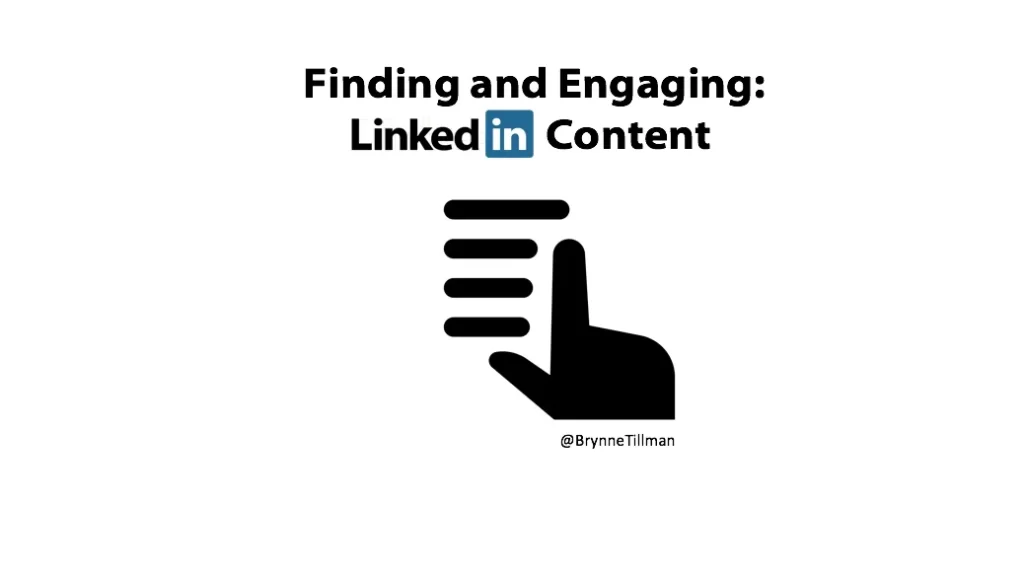
Reading and Sharing Content:
- Curate your feed: Follow companies, influencers, and individuals in your industry to discover relevant and insightful content.
- Read and learn: Actively engage with the content by reading articles, watching videos, or listening to podcasts shared by your network.
- Share thoughtfully: Don’t just hit the share button! Add your insights, questions, or reactions to the content to spark further conversation.
Commenting and Participating in Discussions:
- Go beyond generic comments: Offer thoughtful comments that demonstrate you’ve read and understood the content. Share your perspective, ask questions, and engage with other commenters.
- Respectful communication: Maintain a professional tone even if you disagree with someone’s opinion. Focus on constructive criticism and respectful dialogue.
- Tag relevant individuals: If a comment or post mentions someone who would be interested, tag them in the conversation to expand their reach and potential for engagement.
Creating Your Own Content:
- Share your expertise: Don’t shy away from sharing your knowledge and insights. Publish articles, participate in polls, or host live streams to establish your thought leadership and position yourself as a valuable resource.
- Post consistently: Regular posting keeps you top-of-mind within your network and demonstrates your ongoing engagement with the platform.
- Experiment with formats: Utilize various content forms like articles, polls, images, or videos to cater to different learning styles and preferences within your audience.
Following Social Norms and Etiquette:
- Avoid spam: Focus on providing value and insights rather than promoting yourself excessively.
- Refrain from self-promotion in comments: Respond directly to the content being discussed instead of using comments for self-promotion.
- Respect privacy: Don’t share the personal information of others without their consent.
Beyond Engagement:
- Support the community: Like and congratulate connections on accomplishments, offer help and advice when relevant, and participate in group discussions to foster a sense of community and build stronger connections.
- Network strategically: Engage with content from individuals and companies you’d like to connect with professionally. Participate in relevant discussions and showcase your expertise to build meaningful connections.
Overall, engaging with content on LinkedIn is about fostering thought leadership, building connections, and establishing yourself as a valuable member of your professional network. By following these strategies and remaining authentic, respectful, and informative, you can make the most of your LinkedIn experience and achieve your professional goals.
Chapter 8: LinkedIn best practices and tips
Here’s a compilation of LinkedIn best practices and tips to help you optimize your profile, network effectively, and achieve your professional goals:
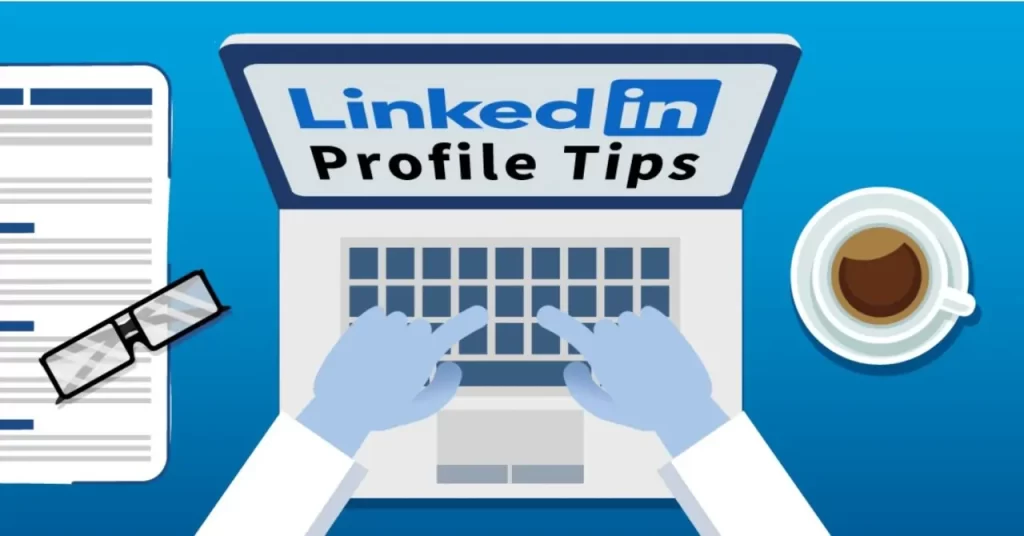
Profile Optimization:
- Create a compelling profile:
- Use a high-quality headshot that portrays professionalism and friendliness.
- Craft a clear and concise headline summarizing your value proposition.
- Write a detailed and engaging summary highlighting your skills, experience, and achievements.
- Include relevant keywords throughout your profile to improve search ranking.
- Showcase your education and certifications.
- List your skills and experience in detail, quantifying achievements with data whenever possible.
Networking and Building Connections:
- Connect with people you know: Start by connecting with colleagues, classmates, friends, and family members on LinkedIn.
- Join relevant groups and follow company pages: Participate in discussions and engage with content within these groups and pages.
- Send personalized connection requests: Briefly explain why you’d like to connect and highlight a shared interest or connection.
- Engage with your network: Like and comment on posts, share relevant content, and participate in discussions.
- Attend virtual events and webinars to connect with professionals in your industry.
Content Strategy:
- Share valuable content: Publish articles, insights, and experiences related to your field to establish yourself as a thought leader.
- Post consistently: Maintain a regular posting schedule to stay top-of-mind within your network.
- Experiment with formats: Utilize diverse content types like articles, polls, images, and videos to cater to different learning styles.
- Engage with other’s content: Comment thoughtfully, ask questions, and share your perspective on relevant topics.
- Follow social norms: Avoid spam, maintain professional communication, and respect others’ privacy.
Personal Branding:
- Showcase your expertise: Share accomplishments and quantifiable results to demonstrate your value.
- Maintain an authentic voice: Let your personality shine through to cultivate genuine connections.
- Embrace transparency: Be honest and transparent about your experiences and expertise.
- Request recommendations and endorsements: Positive feedback from reputable individuals enhances your credibility.
Job Search Optimization:
- Post your resume: Make it easily searchable by recruiters by utilizing the “Jobs” section.
- Set up job alerts: Receive notifications for positions that match your skills and interests.
- Apply directly through LinkedIn: Streamline your application process with the “Easy Apply” option.
- Connect with recruiters and hiring managers: Search for recruiters specializing in your industry and engage with relevant company pages.
Additional Tips:
- Utilize LinkedIn Learning: Access online courses and tutorials to enhance your skills and qualifications.
- Track your progress and network activity: Analyze profile views, engagement metrics, and connections’ activity to understand your profile’s performance and identify areas for improvement.
- Be patient and consistent: Building a strong presence requires time and effort.
By following these LinkedIn best practices and tips, you can leverage this platform effectively to build meaningful connections, establish your personal brand, and achieve your professional aspirations. Remember, authenticity, consistency, and engagement are key to maximizing your LinkedIn experience and unlocking its full potential.
Also Read – The Complete Guide to Google My Business and Online Orders
Also Read – LinkedIn Launches MBA Rankings Focused On Career Outcomes
Chapter 9: Frequently Asked Questions about LinkedIn
Chapter 10: Conclusion
Throughout this exploration, we’ve delved into the vast potential of LinkedIn in today’s professional landscape. We’ve covered various aspects, including:
- Its role as a free online presence management platform for professionals.
- The benefits it offers in terms of:
- Strengthening professional networks
- Showcasing expertise and achievements
- Advancing career development
- Strategies for creating and optimizing profiles, engaging with content, and building a strong personal brand.
- Best practices and tips to maximize your experience on the platform.
Remember, LinkedIn is not just a static profile; it’s a dynamic platform that thrives on consistent engagement and participation. By actively building connections, sharing valuable insights, and showcasing your expertise, you can unlock the full potential of LinkedIn and drive your career toward success.
We hope this comprehensive overview equips you with the knowledge and strategies to navigate the professional world effectively through the power of LinkedIn.

